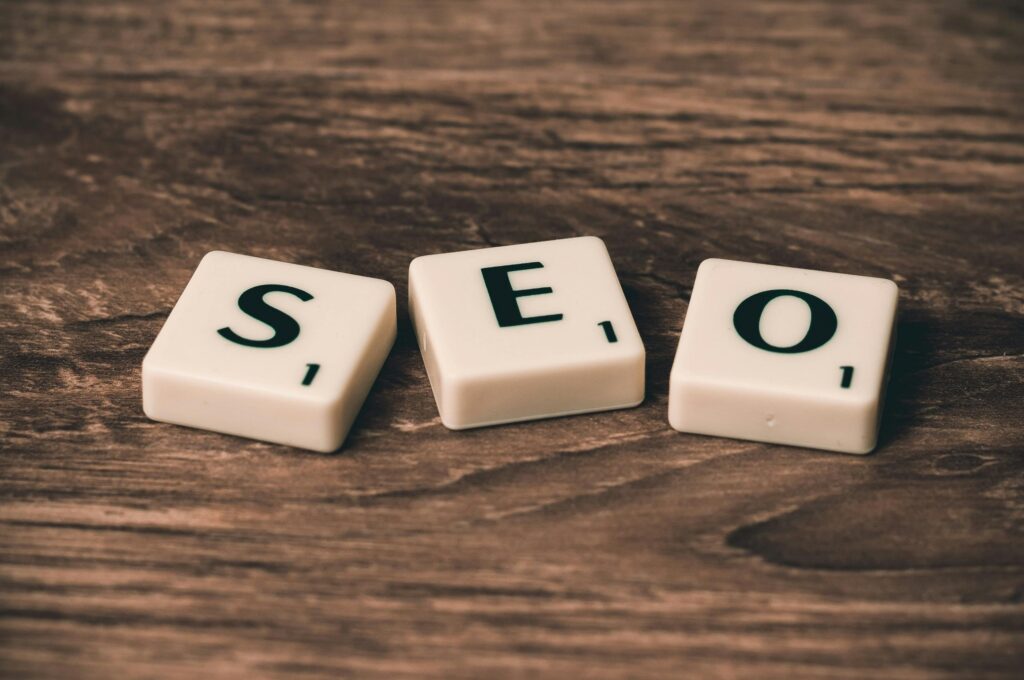In the ever-evolving world of digital marketing, one of the most crucial elements that can make or break the success of your blog is search engine optimization (SEO). While there are various aspects to SEO, one of the most important and controllable areas for bloggers is On-Page SEO. On-page SEO refers to the practice of optimizing individual pages or blog posts to rank higher in search engine results and drive more organic traffic. By focusing on on-page SEO, bloggers can significantly improve their chances of being discovered, gaining more traffic, and increasing engagement with their content.
In this blog post, we’ll explore the benefits of on-page SEO for a blog, and how even small improvements can lead to noticeable results. From boosting rankings to enhancing user experience, the advantages of implementing on-page SEO strategies are numerous and impactful.
What is On-Page SEO?
Before diving into the benefits, let’s first understand what on-page SEO entails. On-page SEO involves optimizing elements of a webpage that are under your control to improve both search engine rankings and user experience. These elements include:
- Title tags and meta descriptions
- Headings and subheadings (H1, H2, H3, etc.)
- URL structure
- Keyword optimization
- Internal and external linking
- Image optimization
- Mobile-friendliness
- Page load speed
- Content quality and relevance
Essentially, on-page SEO is about ensuring your blog is structured in a way that search engines can easily crawl, index, and rank your content, while simultaneously providing a seamless and engaging experience for readers.
Now, let’s break down the specific benefits of focusing on on-page SEO for your blog.
1. Improved Search Engine Rankings
The most obvious benefit of on-page SEO is improved rankings in search engine results pages (SERPs). When your blog is properly optimized, search engines can more easily understand the context and relevance of your content. This allows your blog to rank higher for targeted keywords.
How On-Page SEO Improves Rankings:
- Keyword Optimization: By strategically placing your target keywords in the right places (title, headings, content, etc.), you make it easier for search engines to identify what your page is about.
- User Signals: On-page SEO can improve user engagement (such as reducing bounce rates and increasing time on page), which is a positive ranking factor for search engines like Google.
- Content Structure: Properly structured content (using headings and subheadings) helps search engines understand the hierarchy and relevance of information, boosting your chances of ranking for specific queries.
Example:
Let’s say you’re blogging about “healthy smoothie recipes.” By optimizing your page with relevant keywords like “best healthy smoothie recipes” or “nutritious smoothie ideas,” you increase your chances of ranking on the first page of search results for these terms, ultimately driving more traffic to your site.
2. Increased Organic Traffic
When your blog ranks higher in search results, the natural consequence is an increase in organic traffic. Organic traffic is the traffic you receive without paying for ads, which means it’s cost-effective in the long run. Blogs that rank well for valuable keywords will appear at the top of the search results and attract more clicks from users looking for information.
How On-Page SEO Increases Organic Traffic:
- Targeting Long-Tail Keywords: On-page SEO helps you optimize your blog posts for long-tail keywords, which are specific and less competitive. Long-tail keywords often lead to more qualified traffic because they represent users with a clear intent.
- Featured Snippets and Rich Results: By optimizing content to answer specific questions directly, your blog post might appear in featured snippets or rich results, drawing even more traffic from search engines.
Example:
If your blog about smoothies ranks high for long-tail keywords like “high-protein smoothies for muscle gain,” users searching for that specific query are more likely to find and click on your content, thereby increasing your organic traffic.
3. Better User Experience
On-page SEO isn’t just about pleasing search engines—it’s also about enhancing the experience for your blog readers. A blog that is easy to navigate, quick to load, and well-organized will engage visitors longer, which can improve overall site performance.
How On-Page SEO Improves User Experience:
- Optimized Navigation: By using clear internal links and a logical URL structure, visitors can easily find related content and explore more of your blog.
- Faster Load Times: Page speed is an essential part of on-page SEO. Optimizing images, reducing unnecessary code, and using proper web hosting can make your blog load faster, which leads to a better user experience.
- Mobile Optimization: Since many users access content from their mobile devices, having a mobile-optimized blog is crucial. Google now uses mobile-first indexing, meaning that mobile-friendly websites are prioritized in search results.
Example:
Imagine you’ve published a blog post on “10 Best Smoothie Recipes for Weight Loss,” but it takes too long to load. Users will quickly abandon the page, which negatively impacts your bounce rate. By optimizing your blog’s page speed, visitors will stay longer and engage with your content, improving both user experience and SEO.
4. Higher Engagement and Lower Bounce Rates
Another significant benefit of on-page SEO is that it can help reduce bounce rates and increase user engagement. When visitors land on your blog, you want them to stay longer and interact with the content.
How On-Page SEO Reduces Bounce Rates:
- Clear and Compelling Headlines: Well-crafted headlines and subheadings can grab a reader’s attention immediately and encourage them to read more.
- Easy-to-Read Content: Using short paragraphs, bullet points, images, and multimedia makes your content more digestible and encourages users to engage more deeply.
- Call to Action (CTA): Effective CTAs, such as “Sign up for our newsletter” or “Check out more smoothie recipes,” can keep visitors exploring your content and interacting with your blog.
Example:
If you’ve optimized your smoothie blog to include internal links to other related posts like “Best Protein Powders for Smoothies” or “Smoothie Ingredients for Better Digestion,” readers are more likely to stay on your site and explore other articles, reducing the chances of them leaving after just a few seconds.
5. Enhanced Content Relevance and Quality
On-page SEO encourages you to focus on high-quality, relevant content that satisfies user intent. Content that is well-written, thoroughly researched, and valuable to your audience will naturally rank better in search engines.
How On-Page SEO Improves Content Quality:
- Keyword Research: On-page SEO begins with understanding what users are searching for. By performing thorough keyword research, you can create content that answers common questions or solves problems.
- Content Depth: Google prioritizes content that is comprehensive and provides real value to the reader. On-page SEO encourages you to cover topics thoroughly, using supporting data, images, and multimedia.
- Multimedia Optimization: By optimizing images, videos, and infographics with relevant alt text, file names, and proper sizing, you enhance both accessibility and search engine visibility.
Example:
Suppose your blog covers the topic “Smoothie Benefits for Skin.” If you do extensive research, include expert quotes, and optimize your post with relevant images and videos, your content becomes more authoritative and more likely to be shared and linked to by others.
6. Better Social Sharing and Link Building
While social shares and backlinks are technically off-page SEO factors, on-page SEO can significantly influence these outcomes. When your content is well-optimized, it is more likely to be shared on social media or linked to by other bloggers, influencers, or websites.
How On-Page SEO Encourages Sharing and Link Building:
- Shareable Content: On-page SEO involves creating engaging, high-quality content that people want to share. Blog posts that answer important questions or provide unique insights are more likely to be shared on social media.
- Backlink Opportunities: Well-optimized content with authoritative sources, research, and data is more likely to attract backlinks from other blogs and websites, which can improve your blog’s SEO.
Example:
A post about “The Ultimate Guide to Healthy Smoothies” might get shared by readers on their social media platforms or cited by other food bloggers, generating valuable backlinks and social signals.
7. Increased Conversion Rate
At its core, on-page SEO is not just about driving traffic but also converting that traffic into loyal readers, subscribers, or customers. Optimized content with clear calls to action can increase conversion rates significantly.
How On-Page SEO Boosts Conversions:
- Optimized CTAs: Strategically placed calls to action can encourage visitors to sign up for your newsletter, download an e-book, or purchase a product.
- Lead Magnets: On-page SEO can involve offering downloadable resources, such as recipe books or smoothie plans, in exchange for email addresses, turning casual visitors into subscribers.
- Clear Value Proposition: On-page SEO encourages you to focus on what benefits the user will receive from your blog, which can drive higher conversion rates.
Example:
If you’ve optimized your post with a lead magnet (like a free “7-Day Smoothie Meal Plan”) and a strong CTA button, you’ll likely convert more visitors into subscribers, which can lead to increased sales, affiliate commissions, or other business goals.
Conclusion: On-Page SEO is Essential for Blog Success
In conclusion, on-page SEO is a critical component of any successful blogging strategy. By improving your content’s visibility, enhancing user experience, increasing engagement, and boosting conversions, on-page SEO offers a range of benefits that can help your blog




Great Blog post. Keep up the Good work. Really informative post.